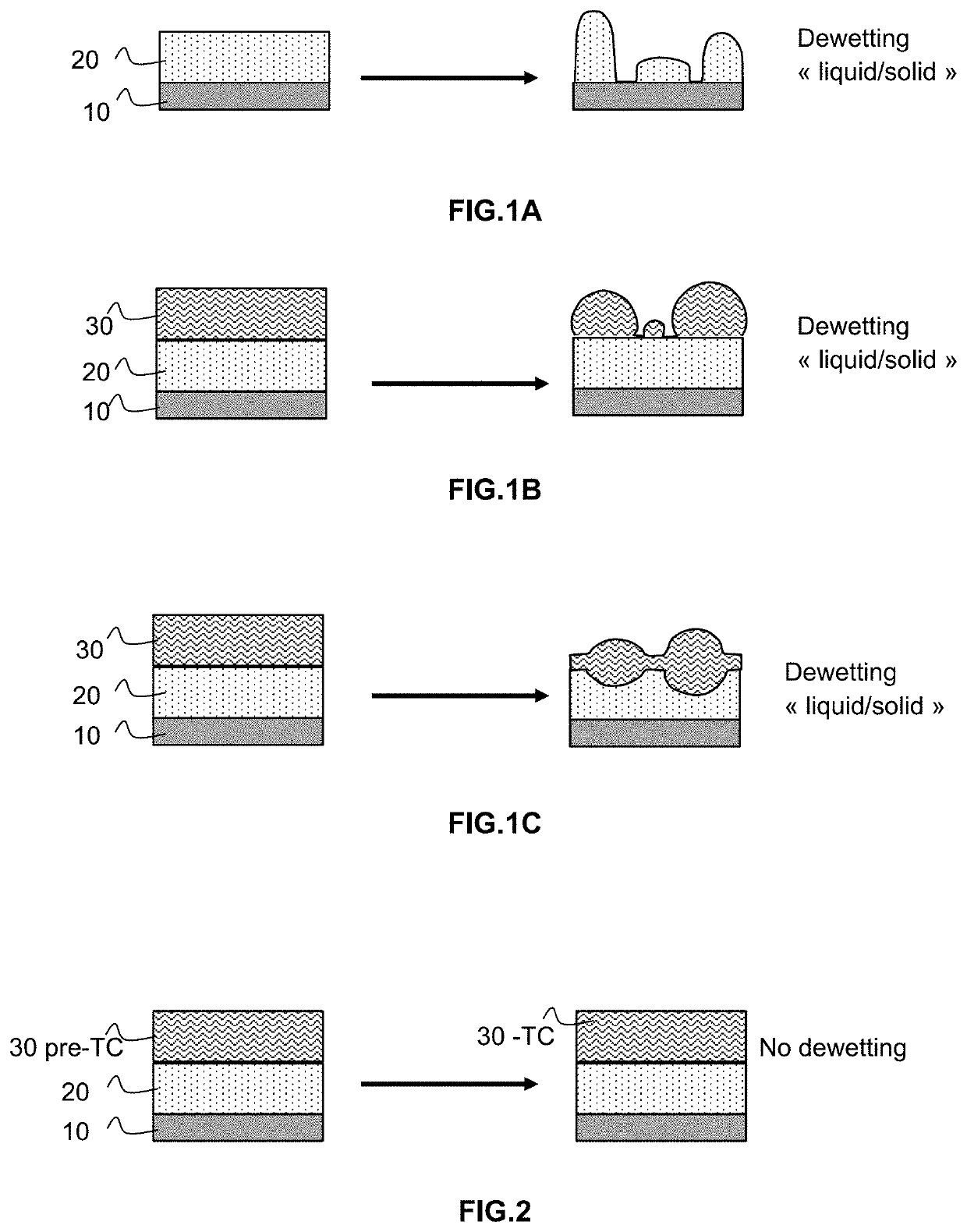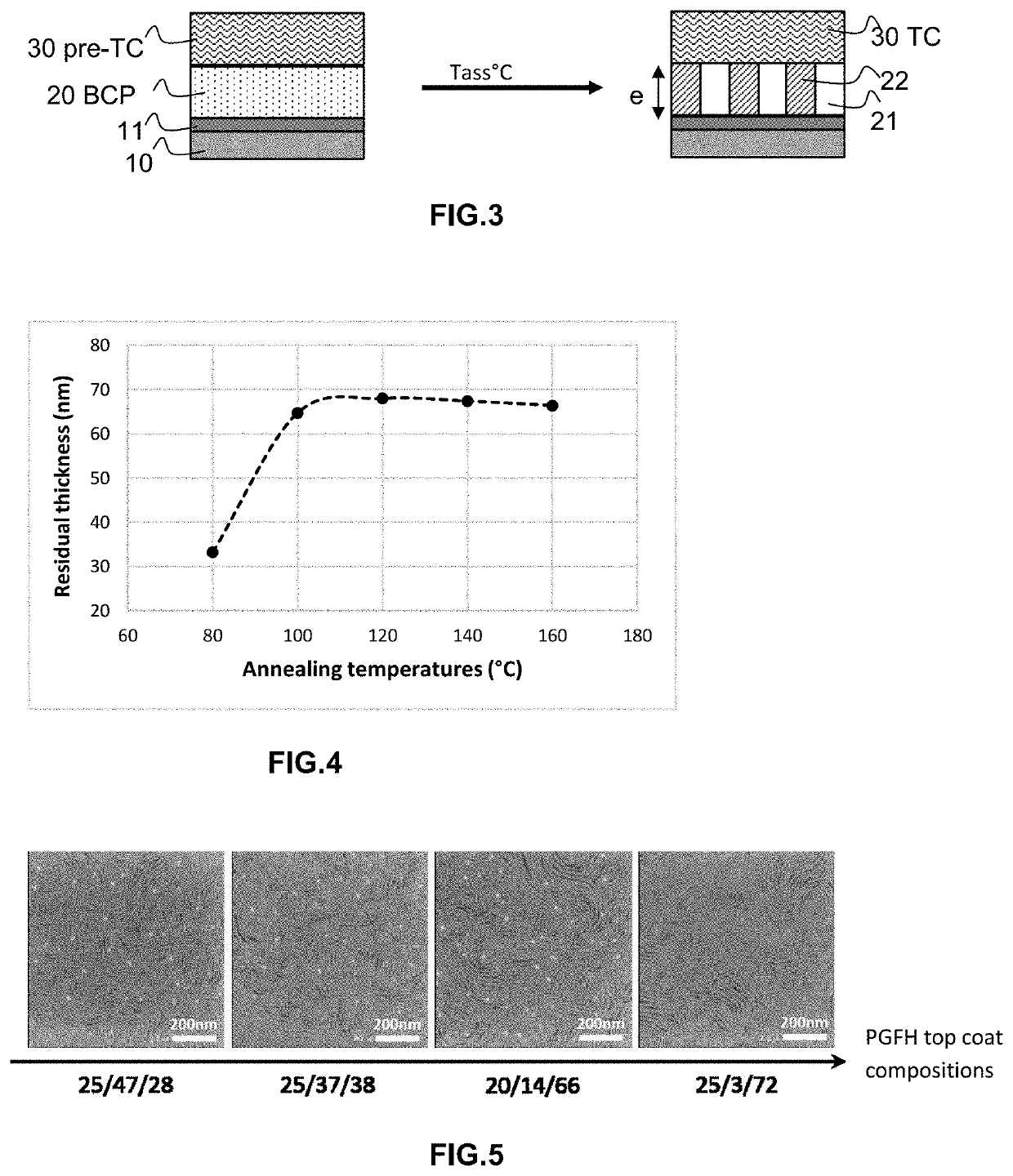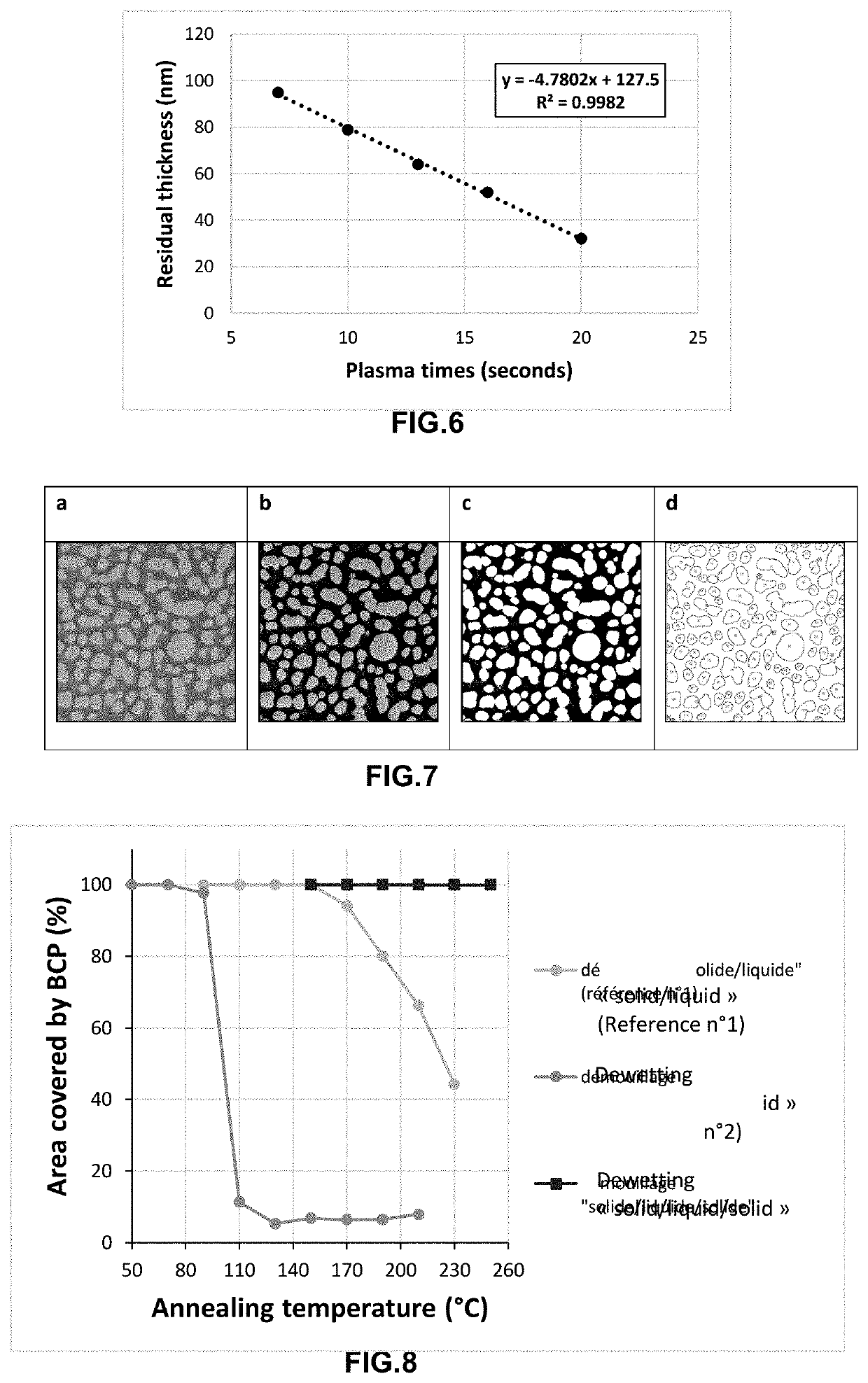Method for producing a planar polymer stack
a polymer and stack technology, applied in the field of polymer stacks, can solve the problems of inability to use the intended application, inability to control the so-called “upper” interface of the system, and inability to stabilize or even stabilize the entire system
- Summary
- Abstract
- Description
- Claims
- Application Information
AI Technical Summary
Benefits of technology
Problems solved by technology
Method used
Image
Examples
example 1
olymers Used
[0211]The poly(1,1 dimethylsilacyclobutane)-block-polystyrene (“PDMSB-b-PS”) block copolymers used were synthesized by sequential anionic polymerization, as already reported in the prior art (K. Aissou &al., Small, 2017, 13, 1603777). The block copolymer No. 1 more specifically used here has a number average molar mass (Mn) of 17,000 g / mol, with a polydispersity index of 1.09 measured by steric exclusion chromatography (SEC) with polystyrene standards. The characterization shows a composition of 51% (by mass) PS and 49% (by mass) PDMSB. The block copolymer No. 2 more specifically used here has a number average molar mass (Mn) of 14,000 g / mol, with a polydispersity index of 1.07. The characterization shows a composition of 51% (by mass) PS and 49% PDMSB. The period of the block copolymer No. 1 is measured at ˜18 nm, that of No. 2 is measured at ˜14 nm, via a fast Fourier transform (FFT) of images taken by scanning electron microscopy (SEM), on self-organized films. As des...
example 2
of Surface Passivation Layers and Top Coat Layers
[0212]The copolymers or homopolymers used in the context of the invention have been synthesized by standard methods such as NMP (nitroxide mediated polymerization, for example with an initiator such as Arkema's initiator marketed under the name BlocBuilder®) or a conventional radical method (with an initiator such as azobisisobutyronitrile), known to the one skilled in the art. The number average molar mass obtained are typically of the order of Mn-5,000-10,000 g / mol. The polymer used as a neutralizing underlayer is a 2-ethylhexyl polymethacrylate homopolymer. The copolymer used as a top coat layer has a copolymer architecture of the poly(glycidyl methacrylate-co-trifluoroethyl methacrylate-co-hydroxyethyl methacrylate) type, subsequently abbreviated to “PGFH”, of variable “GFH” compositions, ranging from 25 / 3 / 72 to 25 / 47 / 28, by mass compositions. In the absence of other specifications explicitly mentioned, the results obtained being ...
example 3
for Top Coat Copolymers
[0213]The various copolymers synthesized according to Example 2 of the PGFH type are all soluble entirely in alcoholic solvents up to 10% by weight or less, such as methanol, ethanol, isopropanol, PGME (propylene glycol methyl ether), or ethyl lactate, as well as in mixtures of these same solvents in any proportions. The block copolymers described in Example No. 1 are not soluble in the same solvents or mixtures thereof.
[0214]Solubility parameters for these different solvents are available in the literature (Hansen, Charles (2007). Hansen Solubility Parameters: A user's handbook, Second Edition. Boca Raton, Fl.: CRC Press. ISBN 978-0-8493-7248-3.), but they are grouped in Table 1 below for convenience:
[0215]
TABLE 1Hansen parameters at 25° C. ((MPa)1 / 2)SolventCAS No.δDδPδHmethanol67-56-115.112.322.3ethanol64-17-515.88.819.4PGME107-98-215.66.311.6isopropanol67-63-015.86.116.4ethyl lactate687-47-8167.612.5
[0216]When these solvents are used to solubilize PGFH copo...
PUM
| Property | Measurement | Unit |
|---|---|---|
| Temperature | aaaaa | aaaaa |
| Temperature | aaaaa | aaaaa |
| Fraction | aaaaa | aaaaa |
Abstract
Description
Claims
Application Information
 Login to View More
Login to View More - R&D
- Intellectual Property
- Life Sciences
- Materials
- Tech Scout
- Unparalleled Data Quality
- Higher Quality Content
- 60% Fewer Hallucinations
Browse by: Latest US Patents, China's latest patents, Technical Efficacy Thesaurus, Application Domain, Technology Topic, Popular Technical Reports.
© 2025 PatSnap. All rights reserved.Legal|Privacy policy|Modern Slavery Act Transparency Statement|Sitemap|About US| Contact US: help@patsnap.com



